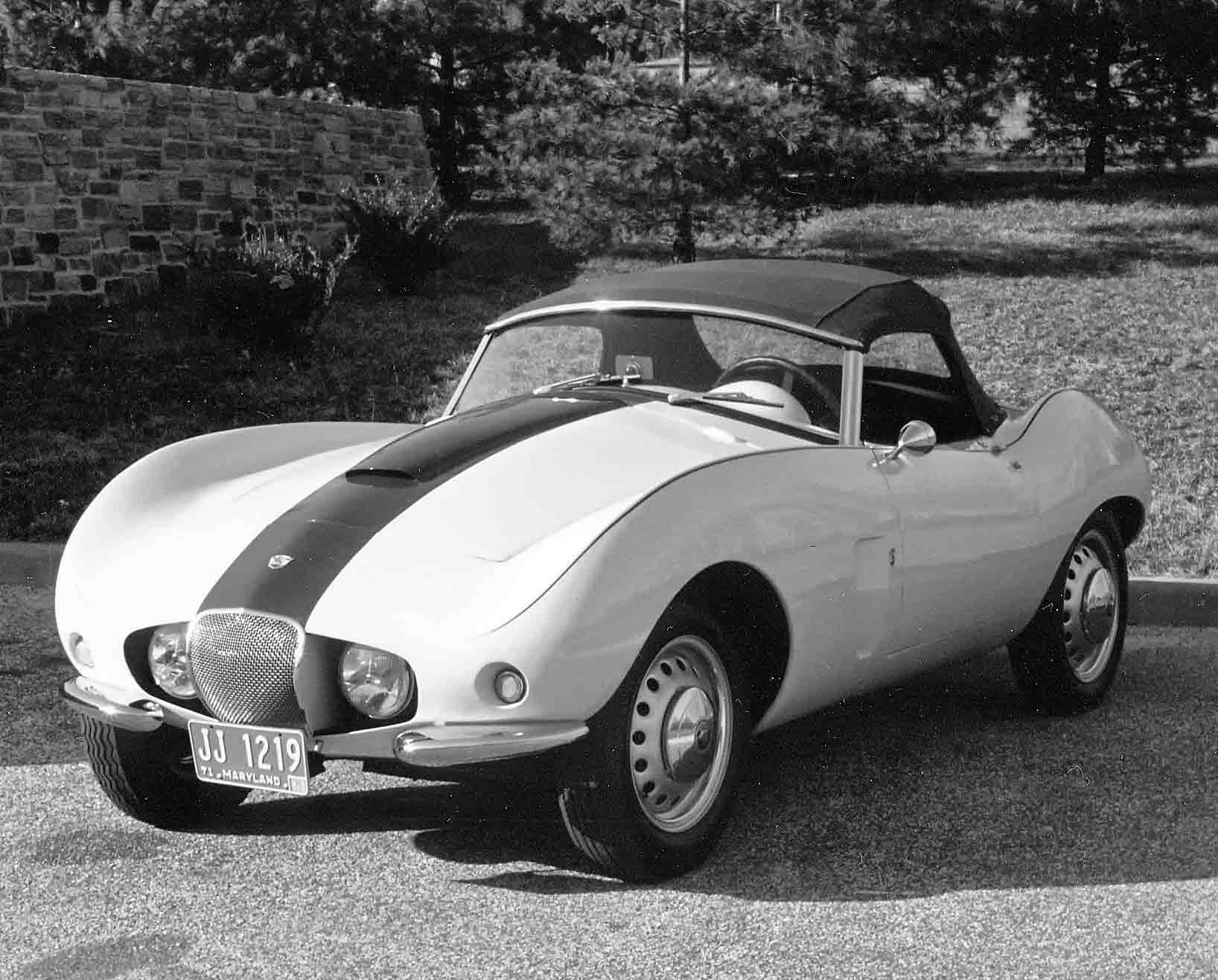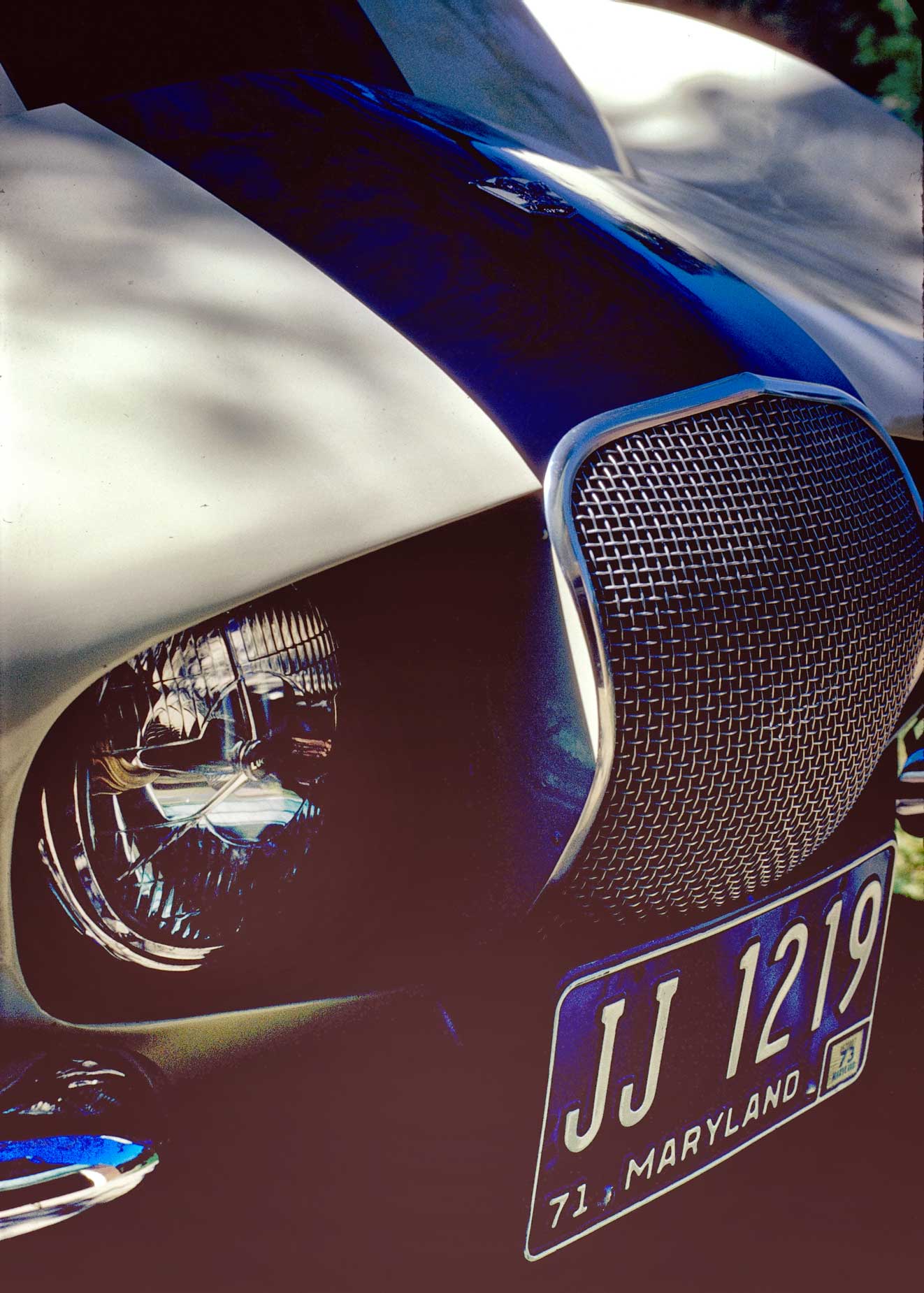My Classic Car was a television show about classic automobiles that was hosted by Dennis Gage who was known for his trademark handlebar mustache and the catchphrase he ended every episode with, “Honor the timeless classics.” Today I’ll be honoring the most timeless classic of the few classic cars I’ve owned. This year, I’m hoping to make this concept a series, although it may just be a short one; I’ve only owned a few automobiles that could be called “classic.”
Today’s Post by Joe Farace
I like old cars, old watches, anything with a vintage, antique kind of a feel to it. I’m just more in tune with that than anything else.—David Boreanaz
For automotive enthusiasts, there are always one or two cars that we’ve owned during our life that we really miss and, for reasons we can’t always remember, sold. Today begins a series of posts about cars I’ve loved and cars that I’ve owned.
The Arnolt Bristol
 Not many people today remember the Arnolt-Bristol automobile that was produced by Stanley H. “Wacky” Arnolt. He was a Chicago industrialist who imported European cars into the USA starting in the 1950s and were sold under his name. Though marketed as American cars, Arnolt’s cars were constructed with British mechanical underpinnings, Italian bodywork and final assembly, sales and distribution in Warsaw, Indiana just across a tunnel from Winona, Indiana where the PPA used to have a wonderful school for professional photographers. (I attended there in 1975.)
Not many people today remember the Arnolt-Bristol automobile that was produced by Stanley H. “Wacky” Arnolt. He was a Chicago industrialist who imported European cars into the USA starting in the 1950s and were sold under his name. Though marketed as American cars, Arnolt’s cars were constructed with British mechanical underpinnings, Italian bodywork and final assembly, sales and distribution in Warsaw, Indiana just across a tunnel from Winona, Indiana where the PPA used to have a wonderful school for professional photographers. (I attended there in 1975.)
For the Arnolt Bristol, Mr. Arnolt purchased two hundred Bristol 404 chassis along with their 1971 cc, 130-horsepower six-cylinder engines (licensed from BMW) from Bristol Cars Ltd. (I think one of my favorite British TV detectives—Inspector George Gently—drove a Bristol.) The Bristol chassis were shipped to Carrozzeria Bertone in Grugliasco, northern Italy. that was founded by Giovanni Bertone in 1912. At Bertone the chassis received an aerodynamic body with a hood designed to clear the car’s three single barrel Solex 32 carburetors. Arnolt was also the US distributor for Solex.
 How I Made this Photograph: I photographed my classic Arnolt Bristol using my first SLR, a Minolta SR-1 with its shutter speed dial-mounted light meter. (There was no TTL metering until the Minolta SRT-101.) Lens was a 55mm f//1.8 Auto Rokkor PF SR mount. It was shot on Ektachrome, processed by Kodak. Exposure unrecorded but somewhat underexposed.) The film was digitized using Kodak’s Photo CD process. This coming Friday, look for a post about working with Photo CD images and macOS computers.
How I Made this Photograph: I photographed my classic Arnolt Bristol using my first SLR, a Minolta SR-1 with its shutter speed dial-mounted light meter. (There was no TTL metering until the Minolta SRT-101.) Lens was a 55mm f//1.8 Auto Rokkor PF SR mount. It was shot on Ektachrome, processed by Kodak. Exposure unrecorded but somewhat underexposed.) The film was digitized using Kodak’s Photo CD process. This coming Friday, look for a post about working with Photo CD images and macOS computers.
Arnolt launched the car by fielding a racing team he entered in the 1955 Sebring 12-hour race. In their first outing, the cars finished first, second and fourth in the Sports 2000 class. The following year they took second and third in class. In 1957 the team withdrew after driver Bob Goldich had a fatal accident. That accident along with his friend’s death caused Arnolt to withdraw from motorsports. Right now there are (maybe) only 85 of the 142 cars built are known to exist in conditions varying from needing complete restoration to concours quality.
Despite their racing successes, the cars did not sell well. Some of the cars didn’t sell until after 1960 with the last car, fitted with four headlights, remaining unsold until 1968. The car I co-owned with a friend, who did all the hard work, I was just a dogsbody, was one of the later cars. We gave it a eleven-month rolling restoration, painting it in the livery of the racing team. We had fun with it, exhibited it in shows and it always won some kind of prize, more often than not first place in the sports car category. Later we sold it and it ended up with another friend who was a vintage racer who owned the car for many years.
Not long ago, that vintage racer sold it to a gentlemen in the UK who contacted me and told me of his plans to restore the car. That never happened and he sold the car to another gentleman in Lichtenstein, who not only planned to restore it but sent it to a Carosserie in Switzerland for a frame-off restoration. The current owner sent me some of the photos showing how the restoration was going and from what I could see, the car looks stunning.
In 1970, the car in unrestored condition and missing amenities such as a windshield, top, grille and lots of other stuff, cost us $395. The current owner paid $300,000 before he began its current restoration.
If you enjoyed today’s blog post and would like to buy Joe a cup of Earl Grey tea ($2.50), click here. And if you do, thank so very much.